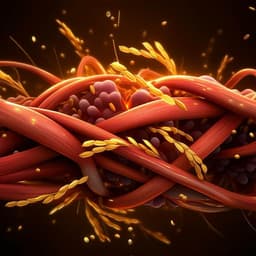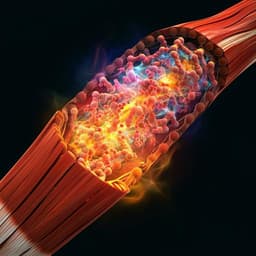
Medicine and Health
ROS-activated CXCR2+ neutrophils recruited by CXCL1 delay denervated skeletal muscle atrophy and undergo P53-mediated apoptosis
Y. Xiang, J. Dai, et al.
Discover how reactive oxygen species (ROS) activate neutrophils to combat muscle atrophy following denervation in this groundbreaking research by Yaoxian Xiang and colleagues. Their study reveals a potential therapeutic target in neutrophils for treating skeletal muscle atrophy, presenting exciting new avenues for intervention.
~3 min • Beginner • English
Related Publications
Explore these studies to deepen your understanding of the subject.







